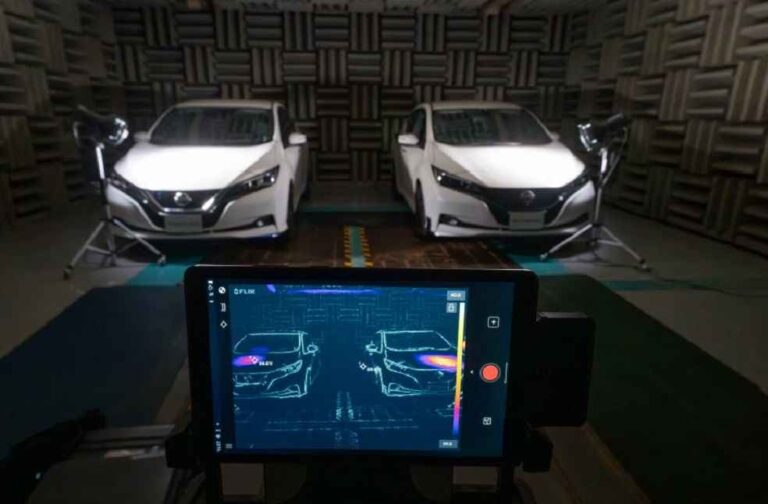Nissan’s latest innovation aims to redefine vehicle efficiency and sustainability with a revolutionary automotive paint designed to lower cabin temperatures and cut energy consumption. This paint technology aligns with Nissan’s vision of enhancing journeys and fostering a sustainable society.
Developed with Radi-Cool, a leader in radiative cooling, this paint integrates metamaterial—synthetic composites exhibiting unique properties. These materials feature two microstructure particles that reflect near-infrared rays and generate electromagnetic waves, significantly curbing heat transfer to the vehicle’s surface.
A 12-month feasibility trial began in November 2023 at Tokyo International Air Terminal, Haneda. Partners include Japan Airport Terminal. Radi-Cool Japan, and All Nippon Airways (ANA). A Nissan NV100 service vehicle, operated by ANA, features this advanced paint to assess its performance under real-world high-temperature conditions.

Initial findings are promising: Vehicles treated with Nissan’s cool paint display up to a 12-degree Celsius reduction in exterior surface temperature and up to 5-degree Celsius cooler interiors compared to those with traditional automotive paint. This is particularly significant for vehicles parked under the sun for extended periods.
A cooler cabin not only enhances comfort but also reduces air-conditioning usage. This lessens the load on the engine or battery, leading to improved vehicle efficiency. This innovation is critical in the era of electric vehicles (EVs), where air-conditioning can greatly impact the state of charge.
Dr. Susumu Miura, senior manager at Nissan’s Advanced Materials and Processing Laboratory, spearheads this development. Dr. Miura, who played a key role in Nissan’s award-winning noise-reducing acoustic material, aims to create cooler cars without added energy consumption.

Automotive-grade radiant cooling paint posed unique challenges. Unlike building applications, automotive paint must incorporate a clear topcoat, be spray-applied, and meet stringent quality standards. Since 2021, Dr. Miura’s team has tested over 100 samples, optimizing a paint thickness of 120 microns—six times thicker than standard automotive paint. They confirmed the paint’s resistance to salt, chipping, peeling, scratches, chemical reactions, as well as its color consistency and repairability.
Development continues, with the team exploring thinner options that maintain cooling performance. The goal is to offer this paint for special orders in various colors, with significant potential for light commercial vehicles like vans, trucks, and ambulances.
Nissan’s cool paint technology trial marks a pivotal step towards greater vehicle efficiency and sustainability. By reducing the need for air-conditioning, this innovation enhances comfort and contributes to lowering energy consumption and greenhouse gas emissions. Forward-thinking initiatives like this are crucial for steering the automotive industry towards a greener future.
GENERAL | Mitsubishi Xforce Wins 5-Star Safety in 2024 ASEAN NCAP





